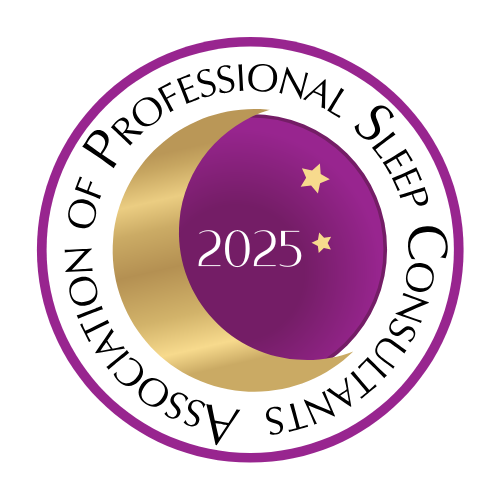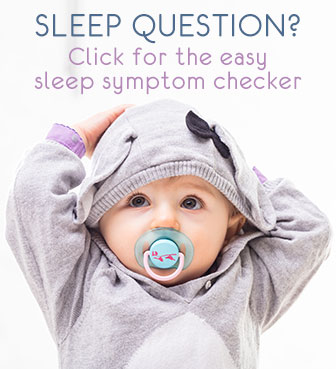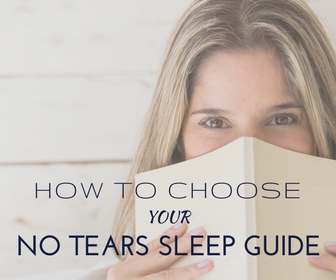Choose the only safe sleeping position: On The Back
Author Name: Heidi Holvoet, PhD
Medical fact-check: Dr Leah Alexander, M.D., F.A.A.P.
On the back is the baby sleeping position that best protects your little one from SIDS (Sudden Infant Death Syndrome, also called cot or crib death).
Back to Sleep
Worldwide
Back
to Sleep
campaigns in the late 80s-early 90s made
a huge effort to advise parents to put their babies to sleep on their
backs. They were very successful;
the
number of SIDS cases has decreased tremendously
since then.
[1]
Before that, it was believed that putting babies on
their stomach at night was safer as on the back was thought to lead to
aspiration problems. No
evidence was found for this though.
On the contrary, lying on the stomach is when breathing can more
easily be
obstructed.
Not all babies have the strength or reflex to lift
their head when necessary which can be life-threatening. Also sleeping
on the side must be avoided.
On The Back is THE single recommended baby sleeping position.
Some situations require extra caution:
- When two or more risk factors are combined the odds get worse. A premature babie, preemie, or light-weight who does not sleep on their back is at extra risk.
- When having gotten used to always lying on the back and then being put on the stomach gives an extra high risk of SIDS.
Putting your little one
on the side
to sleep is
not
recommended
either. They can
easily roll onto their stomach. Any wedges or other fixing systems to
keep baby in any one position can be dangerous. Baby can get stuck or
suffocate.
There is a specific medical condition,
Pierre-Robin Syndrome that will require baby to be on
their belly when sleeping. Evidently you'll do this only following professional
medical advice.
How to address your baby sleeping on the back
Until your baby is strong enough to easily roll back and forth from back to tummy, you might want to gently turn your baby back on their back when you notice they've rolled over.
Once your baby rolls back and forth easily, you will still want to put them on the back to sleep whenever first placing them in the crib. Some parents stay near and resolve to keep turning them around. Most experts agree though that this isn't necessary (see external links below).
Following the
SIDS prevention guidelines, you will be near your baby (supervise
closely or sleep in the same room) to monitor carefully. That is
especially advised in the first year, either with baby in their own crib or
cosleeping safely (!). This way you automatically
monitor your baby and can roll them over when necessary.
But once your baby is
so agile and strong to roll back and forth easily, and you are
confident that they'll also be able to do it while asleep, the risk
from being on the tummy decreases, as this
comment by Dr Sears and the answer to the rolling over question on Safe to Sleep state.
A
sleep sack, sleeping bag, or wearable blanket can help encourage some babies to remain on their backs when sleeping, especially a slightly heavier one like the
Slumbersac
Sleeping Bag 2.5 tog. It makes it slightly more difficult to
roll over. Of course make sure you get the right (safe) size for your baby and always coordinate with the room
temperature to avoid getting too hot.
A sleeping bag also keeps your little one covered without the risk of
sliding under it with their head.
I advise against the use of a blanket, sheet, quilt, comforter or similar as they are not deemed safe with respect to SIDS risk. I always advise sleeping bags or wearable blankets.
WARNING!
Do NOT use a
sleep
positioner
or any type of "holding" wedges. They are not safe.
How to keep your baby sleeping safely - on their back
Many parents notice that their
baby
more easily wakes when they sleep
on their back. Their sleep seems light most of the time. Many
babies often wave their arms in their sleep and wake themselves up like
that.
This
easy arousal
is actually part of why the on the back position helps with
SIDS risk reduction
.
They have more ability to wake up when necessary.
It is true that many
babies sleep
better
when on their stomach
.
The reason is that they often go into a deeper sleep (which is
why the SIDS risk increases).
So, as much as we want quiet and long naps and nights, we need to always put
safety
first.
As their child grows and becomes stronger (beyond 6 months), parents do
report placing their babies on their stomach for better naps and nights.
To be on the safe side, I don't recommend this. Definitely avoid it
if your baby has any of the
risk
factors
and make sure you are around to check on in on them
very regularly. Always consult your doctor when in doubt.
What about tummy time ?
Tummy time
, or
having your baby spend time on their stomach,
is the standard method
to
help develop motor skills
.
Research has suggested that certain motor skills develop later since
the recommended baby sleeping position became "on the back" ...
The skills do develop, only a bit later. The choice between putting
child's
life at risk or develop motor skills a bit later is easily made.
That said, it is still a good idea to have
baby
play on their tummy
when they're awake to practice those
muscles often!
Dr Alexander, M.D.
advises to link tummy time with an activity you do frequently, like for example changing the diaper. Start with say 1-2 minutes of tummy time after each diaper change after the 2 week old visit, then allow longer periods as your baby tolerates it.
Combine sleeping on the back with the
other
guidelines to reduce the risk of cot death
.
Article Author: Heidi Holvoet, PhD - Founder, senior sleep consultant

Heidi Holvoet, PhD, is the founder of the Baby Sleep Advice website and movement, an award-winning author, baby & toddler sleep consultant with 17+ years experience as well as a certified lactation counselor.
Over the years, Heidi has received several awards inluding a Mom's Choice Award (MCA) and National Parenting Awards (NAPPA) for her Baby Sleep Advice website, programs and books. Also, Baby Sleep Advice was awarded "Most Trusted Infant's Sleep Solutions Company 2023" in the Benelux Enterprise Awards 2023.
Heidi continually conducts personal research and participates in continued education and in that way stays up to date with current scientific and pyschosocial infant care.

She is also a member of the Association of Professional Sleep Consultants of which she was one of the earliest contributors. She obtained her PhD degree in physics at the University of Ghent in Belgium.
Heidi is passionate about helping babies and their parents sleep more and better, with her trademark holistic and truly-no-tears approach that has been proven and praised time and again by parents worldwide to be effective and truly no-tears. Respect for you as a parent and your baby, is at the heart of Heidi's warm and kind support. Her approach always keeps in mind a baby's needs and abilities at any given age, is based on pediatric science and the most up to date knowledge in infant care and sleep science.
As well as the award-winning baby sleep programs, Heidi offers popular 1:1 consults and easy-access 30-minute SOS Sleep sessions.
Resources
[1] International trends in sudden infant death syndrome Hauck RF, Tanabe KO. 2008. Pediatrics 122(3): 660-666.

Baby waking every hour?
by Heidi Holvoet, PhD

Sleep schedules by age
by Heidi Holvoet, PhD

Separation Anxiety
by Heidi Holvoet, PhD

Crib safety guidelines
by Heidi Holvoet, PhD

Why does my baby wake up every hour?
by Heidi Holvoet, PhD


